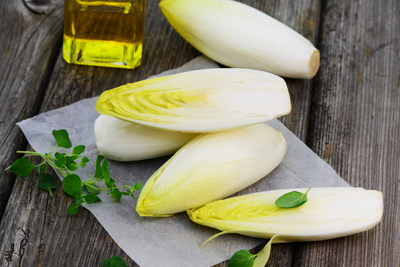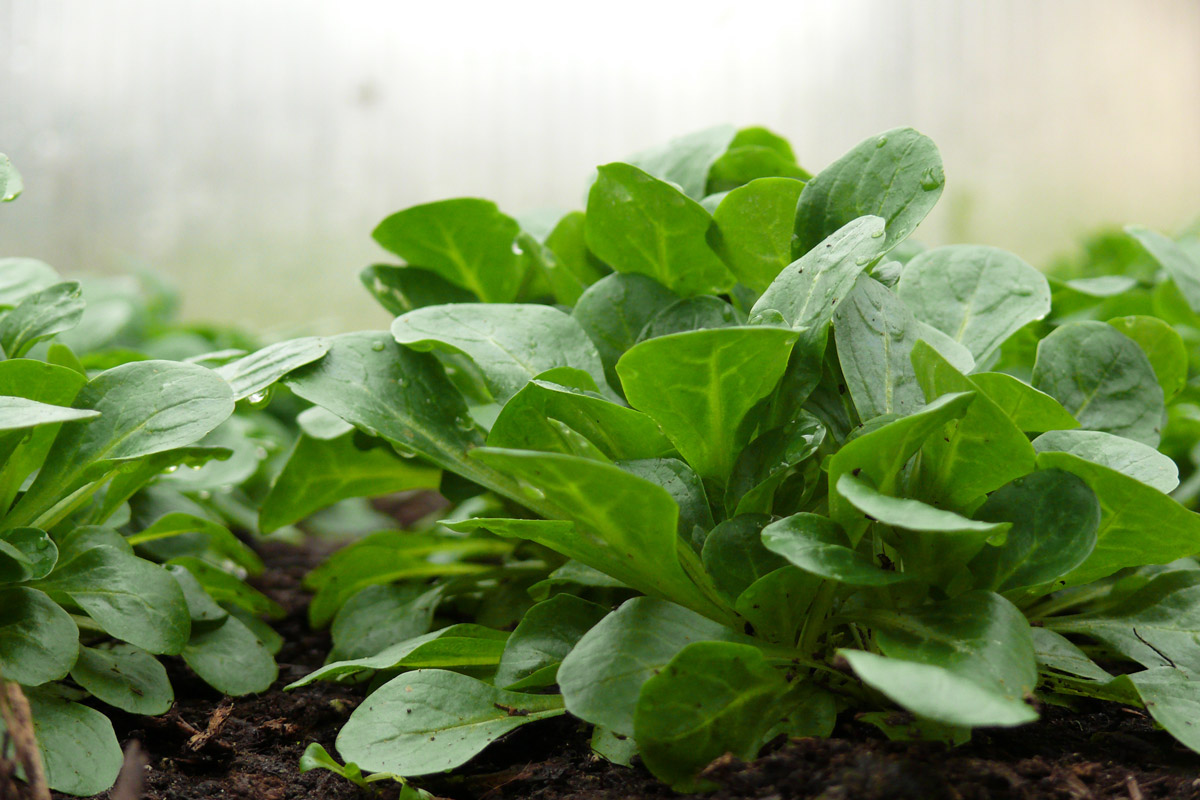The first tender green shoots are sprouting outside and you’re already in the mood for a fresh spring salad. It’s time for a big plate full of tender greed salad leaves with crisp, colorful vegetable snippets, light, tasty sauces and a crunchy topping! A kick of freshness and a boost of vitamins that catapults us out of our winter slumber into a sunny spring mood. But where can we get fresh salad leaves in winter? Butterhead lettuce, iceberg lettuce and the others aren’t in season yet. Our insider tip for domestically harvested, fresh green leaves: Chicory, lamb’s lettuce and purslane.
Fresh, filling and low in calories
Salads are made up of 90 to 95 percent water. That’s why they taste so refreshing and have so few calories. And the fiber in salads makes you feel full more quickly. Although they don’t contain many calories, spring salads provide quite a few valuable vitamins; for example vitamin C and the growth vitamin folic acid. Purslane also scores high with iron and rich stores of magnesium. The delicate green color of the salad leaves that awakens our spring mood is not just due to green chlorophyll. It is also due to an abundance of yellow and red carotenoids, which our body can turn into vitamin A.
Purslane – the fresh, tart power salad

One real insider tip that is once again conquering the hearts of salad lovers is purslane, also known as verdolaga, red root, or pursley. As yet, the green heart-shaped leaves can predominantly be found at markets or in organic supermarkets. But thanks to its inner qualities, don’t be surprised if it soon takes off and everyone wants a bowl full of purslane. Because a 200g portion of purslane easily contains our daily requirement of vitamin C, as well as 85 percent of our daily requirement of magnesium and a quarter of our required iron. Purslane, which grows all through winter, also tastes so refreshingly tangy that you might think spring has already sprung.
By the way: You should definitely eat the long, tangy stem. If you find it too bulky, simply chop it up and sprinkle over your salad.
Chicory – hungry for the bittersweet

Chicory is the salad leaf that comes out of the darkness. Only in pitch-black greenhouses will the brilliant-white perennial spout out of the chicory root. In the light, they grow green leaves and become bitter. The white perennials are enjoyed for their crisp bite and a delicate bitterness that stimulates the appetite. If you prefer it slightly less bitter, simply chop out the hard core. Fruity flavors and creamy dressings harmonize well with the bitter taste for a delicious result. What’s more, crisp chicory is a great source of folic acid and is rich in carotene.
By the way: In the past, root chicory often formed the basis of a coffee substitute.
Lamb’s lettuce – a nutty flavor fresh from the field
Everyone loves lamb’s lettuce. “Lamb’s lettuce” is the affectionate name for these round, deep green leaves. Its other name, “common corn salad”, sounds almost profane in comparison. No matter what you call them, these leaves love the cold and are harvested fresh from the field by hand. With tender leaves, a firm bite and a wonderfully tangy, nutty flavor, this variety will capture the affection of all those who wish to enjoy fresh green leaves in winter or spring. They will even be prepared to wash and clean the leaves in order to do so. And last but not least: They will benefit from plenty of valuable nutrients, because lamb’s lettuce is particularly rich in folic acid and contains a great deal of vitamin C.
A little trick that makes lamb’s lettuce particularly crisp: Before adding a salad dressing, place the leaves in a plastic bag in the fridge for ten minutes.

Fancy a fresh, crisp spring salad? Then try our beet and chicory salad with lamb’s lettuce and purslane.
Note: Since everyone’s health history and nutritional needs are so different, please make sure that you talk with your doctor and a registered dietitian to get advice about the diet and exercise plan that‘s right for you.

